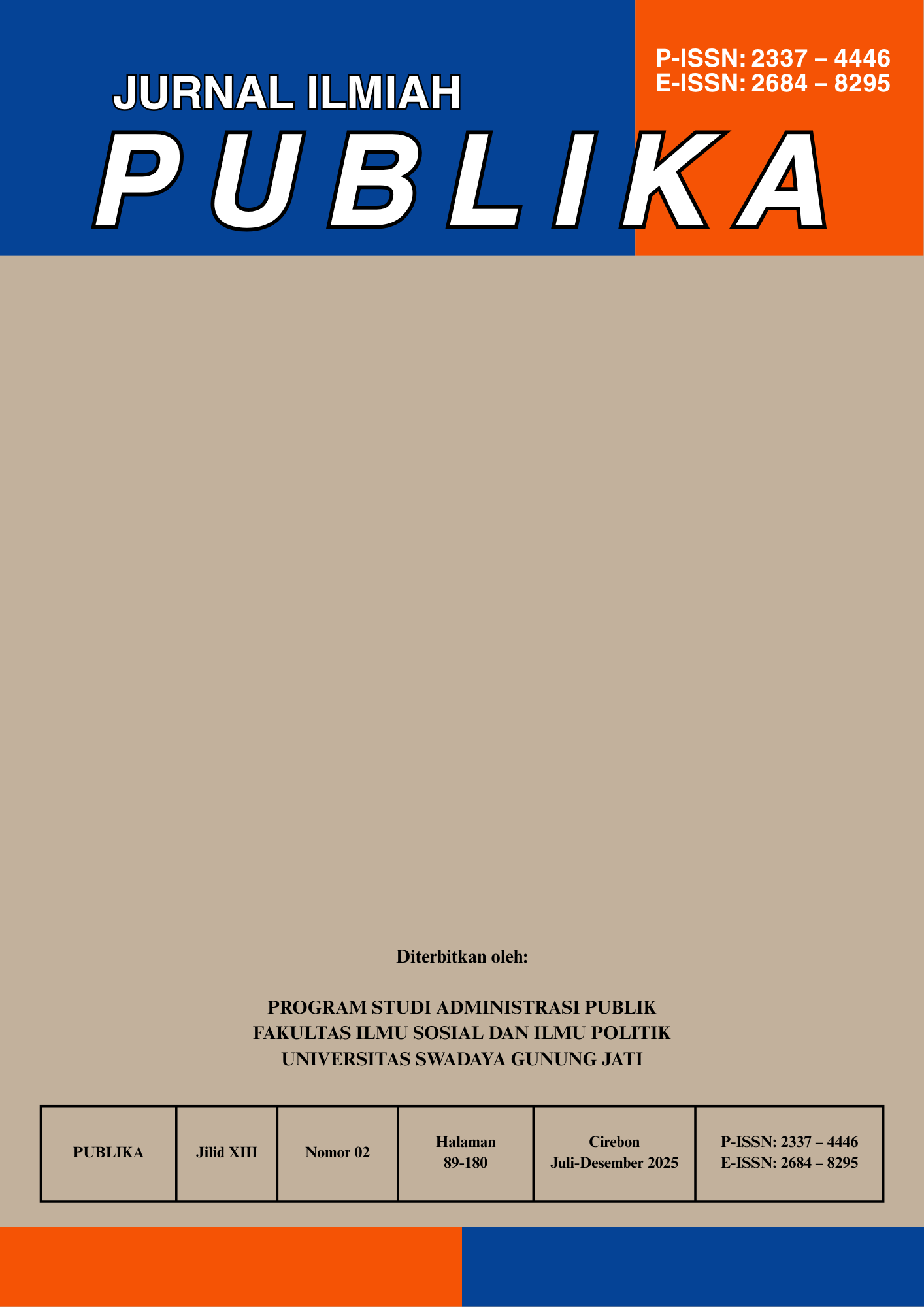Social Inequality and Inequal Access to Jobs
(A Case Study of Street Buskers and Clowns in Hulu Sungai Utara Regency)
DOI:
https://doi.org/10.33603/publika.v13i2.11007Keywords:
Social Inequality; Inequality Of Access To JobsAbstract
The phenomenon of street workers such as buskers and clowns in Hulu Sungai Utara Regency reflects social inequality and limited access to employment that still persists in Indonesia, particularly in regions with uneven economic development. This group is often marginalized from access to education, skills training, and formal employment. This study aims to analyze the factors that drive individuals to work in the informal sector and to identify the role of the government and social organizations in their empowerment. The research applies a descriptive qualitative approach with a case study method, using document analysis from the Central Bureau of Statistics, the Department of Social Affairs, the Department of Manpower, and publications from NGOs working on labor issues. The findings indicate that low education levels, limited skills, lack of employment information, and minimal social protection are the main causes. In addition, negative social stigma and the suboptimal implementation of government policies worsen their condition. The creative economy is seen as an alternative for empowerment through culturally based training and facilitated market access. Therefore, this study recommends cross-sector collaboration to design sustainable and inclusive empowerment programs for street workers
References
Fatimah, S. (2023). Diskriminasi terhadap Pekerja Informal: Studi Kasus Pengamen di Jakarta. Jurnal Sosial dan Kemanusiaan, 8(1), 71–84.
Khoerunnisa, Silvi. (2023). Analisis Faktor-Faktor Yang Mempengaruhi Seseorang Menjadi Pengamen. KHIDMAT SOSIAL: Journal of Social Work and Social Services.
Matamanda, R., et al. (2023). Pekerja Jalanan dan Ekonomi Informal di Negara Berkembang. Journal of Urban Economics, 28(3), 123–136.
Maya, M. (2023). Pemberdayaan Badut Jalanan: Pelatihan dan Dukungan dalam Ekonomi Kreatif. Jurnal Ekonomi Kreatif, 10(2), 15–30.
Sulastri, T. (2023). Badut Jalanan dan Ekonomi Kreatif: Sebuah Pendekatan Pemberdayaan Sosial. Jurnal Pekerja Sosial, 9(1), 42–55.
Zimmerman, M. A. (1995). Psychological Empowerment: An Activation Theory of Development. American Journal of Community Psychology, 23(5), 579–599.
Zimmerman, M. A. (2022). Empowerment: A Path to Social Change. Social Work Journal, 33(4), 112–125.
Badan Pusat Statistik (BPS). (2024). Statistik Ketenagakerjaan Indonesia, Agustus 2024. Jakarta: BPS.
Howkins, J. (2001). The Creative Economy: How People Make Money from Ideas. London: Penguin Books.
Irawan, H. (2021). Ketimpangan Struktural dan Perlindungan Sosial: Studi tentang Pekerja Informal di Indonesia. Jakarta: LIPI Press.
Silver, H. (1994). Social Exclusion and Social Solidarity: A Study in the Theory of Welfare. Cambridge: Cambridge University Press.
Conference Proceeidings:
Kembuan, Matheosz & Pratiknjo. (2021). Kehidupan Pengamen Jalanan di Kawasan Boulevard Kota Manado. Unsrat.
Downloads
Published
Issue
Section
Citation Check
License
The Authors submitting a manuscript do so on the understanding that if accepted for publication, copyright of the article shall be assigned to Jurnal Ilmiah Publika Prodi Administrasi Publik. Universitas Swadaya Gunung Jati as publisher of the journal. Copyright encompasses rights to reproduce and deliver the article in all form and media, including reprints, photographs, microfilms, and any other similar reproductions, as well as translations.
Jurnal Ilmiah Publika, Universitas Swadaya Gunung Jati and the Editors make every effort to ensure that no wrong or misleading data, opinions or statements be published in the journal. In any way, the contents of the articles and advertisements published in Jurnal Ilmiah Publika are the sole responsibility of their respective authors and advertisers.










